Most people brush their teeth regularly but don’t always floss regularly. That means they miss cleaning up to 35% of their teeth surfaces! Flossing is just as crucial to your oral health as brushing, yet so many people neglect to floss or don’t floss properly. At Hodges Orthodontics, we’ve seen the results of people who don’t floss, and it’s not pretty. Flossing reduces plaque and food particles that can lead to tooth decay. It can reduce bad breath. So how often should you floss, and when is the best time to floss?
Hodges Orthodontics knows all of the facts and myths about flossing, and we know how beneficial flossing can be to your overall health. Follow a few of these tips, and you’ll have a gorgeous smile in no time — one you can keep around for a while!

The benefits of flossing
Why is flossing so important? It has a lot of benefits for your oral health, from eliminating plaque to reducing bad breath. You may be surprised at all the benefits of flossing!
Removing plaque
The first benefit is the most obvious: It removes plaque! Flossing cleans up to a third of your tooth’s surface where brushing can’t reach. This is vital because plaque buildup can lead to tooth decay and gum disease. Plaque is that sticky film that builds up on your teeth. It’s a combination of bacteria, sugars, acids, and other particles from food and drinks. When left on the tooth, that combination will break down the minerals in the enamel — the tooth’s protective outer shell. This can lead to tooth decay, which causes cavities. Flossing and brushing clean plaque from the teeth and reduce the chances of tooth decay.

Prevents gum disease
Plaque doesn’t just damage teeth. It can damage gums, as well. Plaque and food particles can get trapped on and even under your gums. This can cause irritation, inflammation, and eventually infection. That can lead to tooth loss and other health issues. Flossing removes food from the gums, particularly where it can get trapped against the gums between the teeth.
Reducing bad breath
You may think flossing can’t take care of bad breath, but it can! Bad breath is caused in part by the bacteria and acids found in plaque. By removing them, you reduce bad breath. Flossing removes these from the mouth. If you want to help even more, try the minty or cinnamon flavors of dental floss.

How to floss properly
Flossing is about way more than pulling a piece of string between your teeth! To get the most from your floss, you need to know the best times and ways to floss. Here’s how to take your flossing to the expert level.
What’s the best way to floss?
For the best flossing, start with actual dental floss. Don’t just grab a piece of thread. Dental floss is specially made to slide between teeth easily without fraying. It’s also made to be soft enough not to cut your gums – something string can do. Most floss is waxed so it can move between your teeth more easily, but there are some unwaxed versions available.
The best way to floss is to slide the floss between your teeth. Slide it down one tooth and up the adjacent tooth, then reverse it to get the teeth clean. Then, move to the next set.

When do I floss?
The best time to floss is right after brushing your teeth, right? Nope. That’s one of the worst times you can floss your teeth. When you floss your teeth and get all those food particles and plaque on your freshly brushed teeth, it sort of defeats the purpose.
You should always floss BEFORE you brush. That way, you get the food out from between your teeth and brush it away with a good toothbrushing. It also gives your toothbrush a better chance to sneak into the nooks and crannies and get your teeth even cleaner.
How often you should floss
We all know you should brush at least twice a day, though after every meal is best. But how often should you floss your teeth? For most people, once a day is fine. The best time would be at night before bed. You should floss first, then brush. If you’re prone to gum disease, you might also consider flossing in the morning. Otherwise, flossing once a day should keep your teeth and gums healthy.

Using the right flossing tools
Proper flossing is about more than the right techniques. It’s also about the right tools. You might think there aren’t any tools necessary for proper flossing, but that’s not the case. You have several options when it comes to the right flossing tools for you.
Waxed vs. Unwaxed floss
Waxed floss is great for those with crowded teeth who need a little help sliding their floss between their teeth. The wax coating is very thin, so you shouldn’t end up with waxy film all over your teeth. Just in case, that’s another reason you brush after floss.
Unwaxed or wax-free dental floss is also available for those who may be allergic to wax or prefer not to use waxed floss. Waxed or unwaxed floss will work fine as long as it’s true dental floss and is used daily.

Easy flossing tools
Patients today have flossing tools that make it easier than ever to floss. Flossing sticks have gained popularity in recent years. These sticks have two prongs on one end through which a small piece of floss is threaded. The stick allows you to maneuver the floss better and reach all of your teeth more easily.
Floss threaders are another great tool, particularly for our braces and clear braces patients. They look like oversized, thin, plastic needles with giant eyes. That thin plastic slides between the teeth, but more importantly, it slides under your archwire. That way, you can thread the floss under the archwire and through the teeth, then floss like normal. It makes flossing so much easier with braces!
Both of these products are available at major retailers and pharmacies.
Other options for flossing
There are three other options for flossing. The first is a water flosser, which shoots a thin, high-speed stream of water between the teeth to blast the food particles and plaque away. These work pretty well, but you may not get all of the plaque off as well as with actual floss. Air flossers are another option. They perform the same way as the water flosser. A third option is an interdental brush, which looks like a tiny spiral brush on the end of a stick. The tiny brush is designed to slide between the teeth and scrub them with the bristles.

What if my gums bleed when flossing?
Bleeding gums when flossing may be a minor issue or a major problem. If it happens once or twice, it could be that you’ve simply irritated your gums for some reason. Perhaps you chomped down too hard on a potato chip, or maybe your coffee was too hot when you started drinking it. It could also be that you simply flossed too hard. You want to use light pressure when flossing — not floss like you’re trying to win the championship at the Lumberjack Games.
If the bleeding persists, it could signify something more serious. It could be a sign of gingivitis, an early but reversible stage of gum disease. Severe bleeding could be a symptom of periodontitis, a later stage of gum disease that could lead to tooth loss. Before it gets to that, come see us!
Early stages of gum disease, including bleeding or irritated gums, can be treated for most patients by practicing better oral hygiene. However, some patients may have gum issues because of certain medications or genetic factors. If your gums bleed more than once or twice, contact your dentist or call Hodges Orthodontics. We can schedule an appointment to take a closer look and see what’s going on with your gums.

Flossing with braces or Invisalign®
Flossing is vital to good oral health, but it can be challenging if you wear braces. It’s easier for Invisalign and Invisalign Teen patients because you can remove the clear aligners to brush or floss. It’s a little more challenging if you wear braces. If you’re in the Tupelo, MS, area, you can schedule a free consult with Hodges Orthodontics and learn how to get great orthodontic care with us. We’ll happily show you the best methods for properly flossing your teeth! Read our blog for more!

